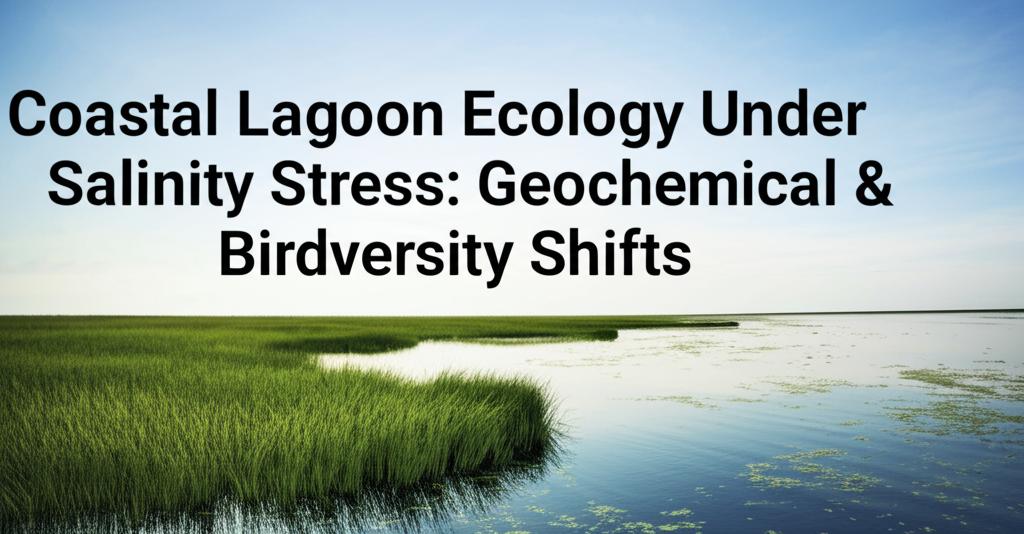Coastal lagoons, those vibrant ecosystems nestled between land and sea, are facing a growing threat: increasing salinity. This isn't just about the water getting a bit saltier; it's a fundamental shift that's triggering a cascade of changes in their chemistry and the rich tapestry of life they support.
The primary driver of this rising salinity is a double whammy of climate change and human activity. Higher temperatures and prolonged dry spells lead to increased evaporation, concentrating salts in these shallow water bodies. Simultaneously, reduced freshwater inflow, often due to upstream water diversions for agriculture and urban development, further tips the balance towards saltier conditions. Rising sea levels also play a part, pushing more marine water into these delicate environments.
The Geochemical Shake-upSo, what happens when a coastal lagoon effectively becomes a "salty soup"? The chemical processes that underpin its health go haywire. Key nutrient cycles, like those of nitrogen and carbon, are disrupted. Important processes such as nitrification and denitrification, which help regulate nutrient levels, can be impeded. This can lead to an unhealthy accumulation of nutrients, a phenomenon known as eutrophication, potentially fueling algal blooms.
Furthermore, the increased salinity can alter the behavior of contaminants and organic matter within the lagoon. Studies have shown that salinity changes can influence methane production, particularly in areas rich in organic matter. The mobility of phosphorus can also be affected by the interaction of saline water with lagoon sediments. In some instances, hypersaline conditions (salinity exceeding that of seawater) can lead to the trapping of nutrients within the system, further exacerbating water quality issues and even increasing greenhouse gas emissions.
Biodiversity Under PressureThe biological communities within coastal lagoons are finely tuned to specific salinity ranges. When these levels shift dramatically, the consequences for biodiversity can be severe.
At the base of the food web, microbial communities – the unseen engines of these ecosystems – are among the first to respond. Rising salinity can lead to a decrease in microbial diversity, with salt-tolerant species becoming dominant. This shift isn't just a numbers game; it impacts the crucial functions these microbes perform, from nutrient recycling to decomposition. These tiny organisms are now being recognized as critical "sentinels," offering early warnings of ecosystem decline.
Phytoplankton, the microscopic plants that form another vital part of the lagoon's foundation, are also highly sensitive. Studies have shown that over-salinization can inhibit their growth and alter the composition of their communities. While some initially rare species might emerge, overall photosynthetic activity can be degraded by sharply increasing salinity.
The impacts ripple up the food chain. For larger organisms like benthic invertebrates (creatures living in or on the sediment), fish, and birds, salinity stress can mean a struggle to survive and reproduce. Some species are physiologically more sensitive to salt than others; increased salinity can directly lead to their decline or disappearance. This can result in a decrease in overall species richness and a change in the dominant species. Coastal lagoons serve as vital nurseries for many fish and crustacean species, and as crucial feeding grounds for migratory birds; these roles are threatened as salinity rises.
Hope on the Horizon?While the picture painted by rising salinity is concerning, recent research also offers glimmers of hope. Studies have demonstrated that if freshwater flows can be restored, even significantly altered lagoon ecosystems can show surprising resilience and begin to recover. For example, following major flood events that flushed lagoons with freshwater, microbial communities have been observed to shift back towards a healthier, more diverse state within months.
This underscores the importance of managing freshwater resources effectively and considering "environmental flows" – dedicated water releases to support ecosystem health. Understanding the intricate links between salinity, geochemistry, and biodiversity is crucial for developing targeted conservation and restoration strategies for these invaluable coastal ecosystems. As sentinels of coastal change, the health of our lagoons offers a clear indicator of the broader challenges facing our coastlines in a rapidly changing world.

